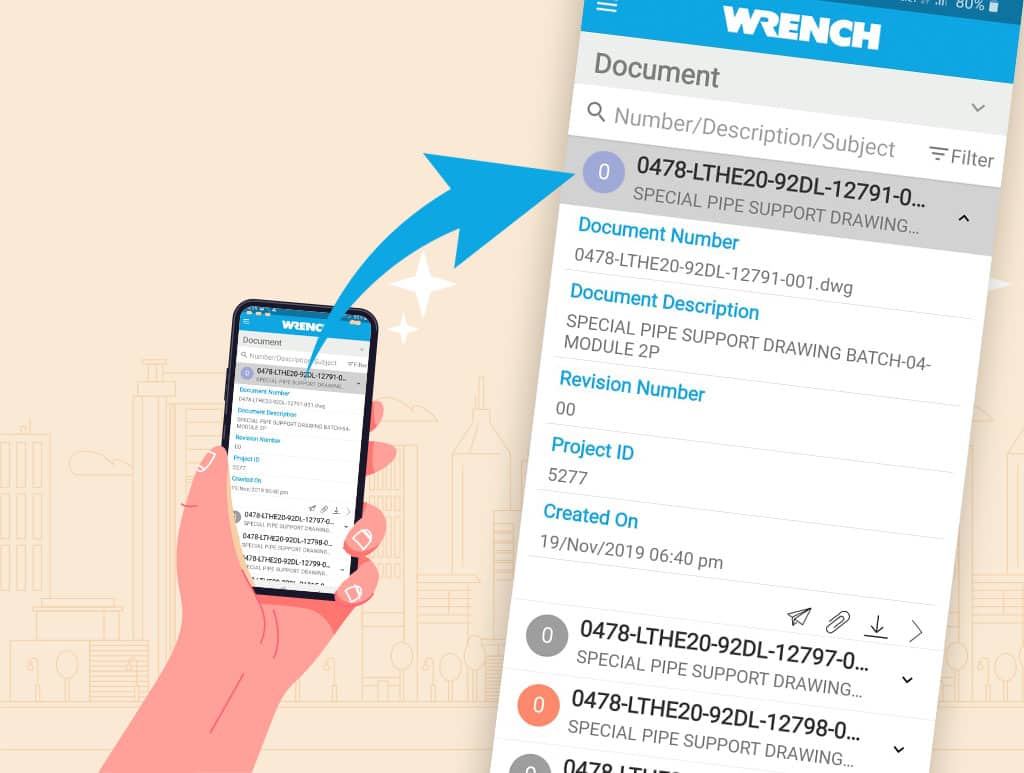Understanding the role of the app in modern project
management
In the past decade, smart devices have revolutionized the way people
work, play, communicate, and even think. As devices shrank, computing
power exploded outward into the cloud. Smart phones became almost
mobile computers. Almost. Phone screens became TV screens,
headphones became personal stereo systems, and software applications
became apps.
Apps run our smart, information-driven, cloud-enabled lives. There was a
trade-off, naturally, and we made it gladly. We willingly sacrificed power for
mobility. We accepted limited functionality over easily-accessible
functions. And the trend continues; even in the ultra-conservative world of
construction software, the app versions of complex enterprise-wide
software installations are slowly gaining acceptance.
But the question remains: for users of enterprise software applications,
how useful is its app, really? As product manager at
Wrench, I helped design the SmartProject app, and this is the answer my
team and I came up with: “As useful as it needs to be in the context of a
personal mobile device.”
In other words, we didn’t intend for the app to replace or mimic the
desktop version – or supplement it. We intended it to add another
dimension, specifically, a dimension of convenience. So in that sense, the
app is deliberately limited, and highly mobile. We intended it to be that
way.
Re-imagining, not downsizing
After studying how our customers used the desktop version, we set out to
create a set of key functions for two specific kinds of mobile users:
managers and engineers.
For managers, we designed ways for them to continue ‘managing’ teams
and deliverables when away from their desks, like viewing and updating
work schedules and to-do lists, viewing dashboards and tracking
progress.
For engineers we designed ways to collaborate on design and to interact
with their colleagues and managers, via their mobile phones.
Efficiency shortcuts when you need them, where you need them.
To give a glimpse into how the SmartProject app adds value, here are 4
common use case scenarios that play out after a project manager has set
up a project on the SmartProject platform (i.e. he has defined documents,
tasks, workflows and correspondence channels.)
Use case 1: A manager from the PMC’s team is on the construction site
talking on the phone with a member of the contractor’s team, and he
wants to find a particular document the engineering team was working on
earlier.
From the app, the manager simply downloads Documents to his smart phone. (He can download as many drawings and documents as he likes, limited only by his phone’s storage capacity.) If he has hard copies at hand, he can scan in the QR code’s from his phone

Use Case 2: A lead engineer is travelling. While away, he is still
collaborating online on a task with his team back at the head office, and after the meeting finishes, he wants to update the changes that
were discussed and agreed on before he forgets.
The engineer opens the SmartProject app and enters the comments
directly on the task so that when he sends it to the rest of the team
(which he can also do from the app), they the entire team is always in sync.
Use Case 3: A manager is checking out progress of work on a
construction site, with a mandate to find out if there are any problems or
issues on the spot and get them corrected as soon as possible.
On site, the manager spots a mistake in the lighting fixtures. He immediately takes a photograph of the problem from his camera phone, adds a note on the photo highlighting the issue, and assigns the issue to the relevant person in the team (ie he starts.
Use Case 4: The project manager of a large project, with many
stakeholders from around the world, bumps into someone from the project
owner’s team at a conference, who asks him about how the project is
progressing.
The project manager opens up his SmartProject app and pulls up the project dashboard which is kept always updated by the system i.e. it can be said to be ‘near-live’. Since the dashboard is integrated with the budgets and schedules (which can also be pulled up from the app) he explains exactly the status of the project progress, the milestones, what is behind or ahead of schedule, what is likely to be delayed, and what actions are being taken to correct the delays, if any. He is thus able to fully satisfy the project owner’s representative with answers about both the overall progress as well as the details.